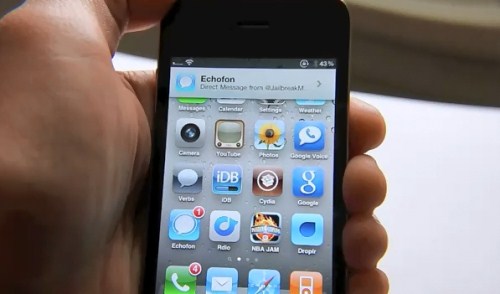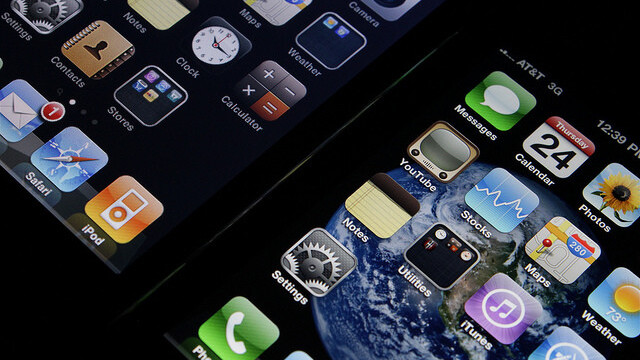
No other company has managed to capture the imagination of consumers in the way that Apple has, not just in the smartphone market but as a retailer in general – other brands would kill for the loyalty and genuine excitement that Apple’s customers have for its products and services.
With the iPhone, Apple changed the way people interacted with a mobile phone, introducing a dedicated touchscreen, apps that would launch with a press of their icon; suddenly handsets were no longer just devices that made calls and could play the odd game of Snake.
After launching as the iPhone, Apple’s smartphone device has gone through numerous iterations, the most recent being the iPhone 4. The iPhone 4 sports Apple’s own A4 ARM-based processor, includes the company’s 960×640 pixel “Retina Display” technology (which is marketed by Apple as being able to display more detail than the human retina can percieve), as well as the company’s latest iOS software which is optimised to run on Apple’s latest handset. It continues to be one of the most popular handsets across the world, despite challenges from a wave of Android-powered devices trying to lure away iPhone purists.
Each year Apple refreshes its smartphone lineup, introducing new hardware and software features to tempt featurephone owners but consumers that have already bought into the Apple ethos. Every year since 2007, Apple has released a new handset in the summer; this year the company looks set to buck that trend and push back the release date of its new iPhone, with early reports suggesting a November release is likely.
This paves the way for the Cupertino-based company to unveil the very latest features for its iOS platform at its WWDC event in June, showcasing what it believes will again set it apart from its rivals. A simple Google search will demonstrate the considerable demand to identify such features before they are officially unveiled, leading to intense speculation and educated guesswork.
So, what are we expecting to see what Apple announces its next iPhone? We’ve received our fair share of tips and read thousands of reports, here is what we think will be included in your next-generation iPhone:
Dual-core A5 Processor
 Apple’s next iPhone is set to be a lot quicker than its predecessor, especially if it is powered by the same A5 dual-core processor that it uses in its iPad 2 tablet.
Apple’s next iPhone is set to be a lot quicker than its predecessor, especially if it is powered by the same A5 dual-core processor that it uses in its iPad 2 tablet.
iOS developers have already burrowed into one of the more recent iOS updates, finding code references and a kernel for a device that is named N94AP, which many believe is the codename for Apple’s “iPhone 5”. With jailbreak guru Chronic identifying the part number for the A5 processor, the kernel found within the iOS release, matches the same part, it all but confirms that the dual-core processor will be used to power the new smartphone.
With the original iPad and the iPhone 4 sharing the same processor, Apple wouldn’t surprise many if it decided to embed the same chip as it uses in the iPad 2. The improved processor would not only deliver improved performance, Apple claims that it will also have nine times the graphics performance than that of an iPhone 4.
NFC – Contactless Payments
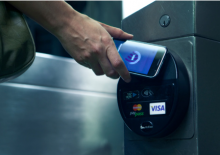
This is one of the most obvious inclusions given Google’s foray into contactless payment services and partnership with Samsung to include NFC chips within the Google-branded Nexus S Android smartphone.
In January, Apple posted a new job listing to its recruitment page seeking a test engineer for iPhone hardware. The listing required the candidate to have knowledge of RFID, a radio technology that falls under the Near Field Communications banner, which can be been used to wirelessly transmit secure data to devices within a close proximity.
Apple’s listing followed analyst reports that the company was readying its own e-wallet, utilising existing customer data and payment details which it has collected for iTunes and App Store use to provide a simple and effective way for iPhone owners to wirelessly pay for goods and services, possibly replacing house keys in a number of years.
Apple already has the necessary components in place to include the technology and roll out an associated service. With millions of customers having already entered their payment details into iTunes to pay for music, apps and movie downloads, Apple is trusted the world over and would likely be the catalyst in pushing contactless payments to the masses.
If Apple doesn’t do it first, it does it better; an Apple-powered payment service would almost certainly roll out across the world at launch, something that no other smartphone manufacturer has either attempted or simply doesn’t have the resources to do.
Improved Notifications
Perhaps the first real smartphone operating system, iOS is widely regarded as a slick and aesthetically pleasing platform. When Apple introduced Push Notifications with the release of iOS 3.0, users could finally receive updates without having to keep an application open, but they weren’t pretty.
Apple has chosen not to improve the UI of its notifications since iOS 3.0 launched in June 2009 but it is widely suggested that the company is about to overhaul the way it updates users on its iPhone handsets. With the jailbreak community filling the void between Apple’s push notifications and Android’s widget-based homescreens, the Cupertino-based company has seemingly stolen a march by hiring the very guy that showed Apple users what they were missing out on.
Reports on Sunday have indicated that the developer of the popular jailbreak notification application MobileNotifier, Peter Hajas, may have been snapped up by Apple, to assist them with development on improving the way its iOS software notifies users. Whilst reports aren’t confirmed, a tiny phrase used in a blog post stating that he was no longer working on the MobileNotifier project has set the rumour-mill into overdrive.
Hajas’ post reads as follows (the emphasis is ours):
I’m taking a break from MobileNotifier and Widge for a while. I have other opportunities and priorities currently. I won’t be able to do much (if any) work on the projects, and I won’t have time to respond to many Tweets or emails. The project is in capable hands, with Kyle Adams, Tim Novinger and others (like Marc Easen) keeping things going.
This is definitely not goodbye. I can’t say why, but it’s worth it. Trust me. If you look around hard enough, you’ll probably figure it out. I hope you guys understand, and I look forward to bringing you more awesome, great, free open source software in the future. Stay tuned for some amazing things! If you absolutely must get in touch with me, send me an email.
Until then, stay hungry and stay foolish.
We looked around hard enough and found what Rajas wanted us to find; evidence that suggest he is to work for Apple. Notice the final five words of his post, perform a couple Google searches and you will come upon this video:
The phrase “Stay Hungry, Stay Foolish”, as said by Steve Jobs himself.
You might be wondering what impact Hajas will have on the iOS platform, if indeed he is to be working with Apple to improve the way the iPhone notifies its owner. MobileNotifier has been regarded as the piece of software that truly schooled Apple on how something should be done and done well, transforming a boring popup notification into this:
Improved notifications might be announced by Apple before the next-generation iPhone is launched but they will undoubtedly feature on the new device when it becomes available. We imagine that Apple wouldn’t stop with improving the notifications system but would also look to embed customizable widgets and additional ways to enhance the homescreen, so the iPhone can be a lot more interactive out of the box.
Voice Control
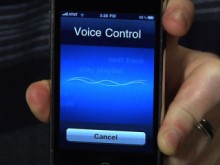 When Apple introduced voice control to the iPhone with iOS 3.0, it didn’t exactly set the world on fire. It was just too awkward and inaccurate. Apple is said to be negotiating with speech recognition company Nuance to give the iPhone 5 the voice control perfection it needs.
When Apple introduced voice control to the iPhone with iOS 3.0, it didn’t exactly set the world on fire. It was just too awkward and inaccurate. Apple is said to be negotiating with speech recognition company Nuance to give the iPhone 5 the voice control perfection it needs.
Nuance doesn’t just do voice recognition, it’s also into imaging and keypad solutions, but it’s primarily known for doing the heavy lifting for a multitude of products and businesses when it comes to crunching speech data.
One such company is Siri, a voice command interpreter that allowed users to do all sorts of interesting things via voice command. Apple purchased the ‘voice concierge’ app early last year and at the time many were wondering exactly how it was going to use Siri’s capabilities to enhance the iPhone. Siri uses Nuance to do the heavy lifting of processing speech into data. It then interprets and uses that data in interesting ways like firing up an app, writing a text message or checking email. It’s a slick enough system for Apple to have paid around $200 million for the technology.
Regardless of whether Apple licenses or purchases the technology outright, it’s clear that it wants the technology. Enough to purchase Siri without having the core technologies that make it possible locked down first. This points to the addition of some serious iPhone voice command upgrades in iOS 5 and subsequently the iPhone 5.
With the crackdown of many states on operation of phones while driving, it’s increasingly difficult to access functions like navigation and music playback on an iPhone without the risk of a ticket, not to mention that it’s simply dangerous to do so at all. Improved voice control could help solve these issues, especially if features like that of Siri, backed with Nuance technology, become a part of the next iPhone at the OS level.
The preview of iOS 5 at WWDC will be the first chance we have to see if a new form of enhanced voice control will be a part of iOS 5, we think it will.
Aluminium Unibody Design
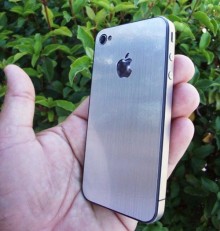 Leaks out of China are increasingly suggesting that Apple will abandon the glass backing of its iPhone 4 and moving it to an aluminium casing, a design which it first employed for its original iPhone.
Leaks out of China are increasingly suggesting that Apple will abandon the glass backing of its iPhone 4 and moving it to an aluminium casing, a design which it first employed for its original iPhone.
An alteration has reportedly been made to stop damage from scratching, paint finishing and glass weight, but also to reduce the likelihood of damaging the phone beyond repair if it is dropped or subjected to any form of trauma.
With a change in design, Apple may also abandon the external antenna design it employs on the iPhone 4, eliminating in one move the signal problems that dogged the launch of the iPhone 4.
iCloud
Apple has recently secured deals with EMI, Sony and Warner Music, suggesting it is about to license music to be streamed from the cloud. With many of its users moving to cloud-based streaming services on their “all-you-can-eat” data plans, Apple is finally looking to let iTunes users play music on demand, instead of having to sync their music collections to their devices.
We expect Apple will announce “iCloud” or a service of a similar name at the beginning of June, changing the way that the iPod and iTunes services operates on the iPhone as a result. Users should still be able to transport their collections but will likely pay a small monthly fee to stream it via their data connections, something that mobile operators might not be best pleased about.
Conclusion
Apple is well known for its secrecy and ability to surprise industry insiders and consumers come launch day. As with every other Apple post out there right now, nothing has been confirmed, nor will it be until Apple starts announcing features for its upcoming iOS 5 release.
Many have ruled out a June iPhone announcement, we believe it is unlikely but remain cautious that Apple could blindside everyone and announce new devices at its WWDC event starting in a couple of weeks.
Of all the rumours, we believe the five above to be the more likely inclusions in the next iPhone, if you feel we have missed out anything major, please do let us know in the comments.
Get the TNW newsletter
Get the most important tech news in your inbox each week.

